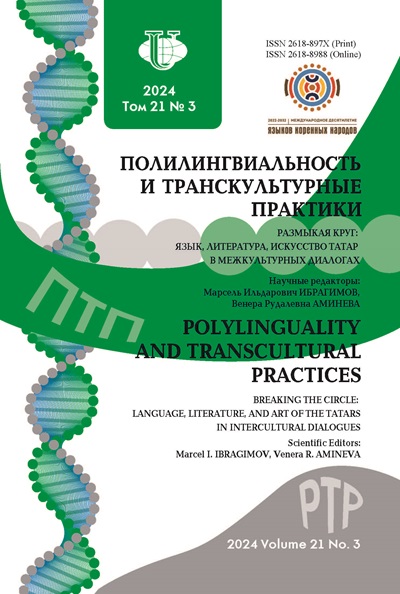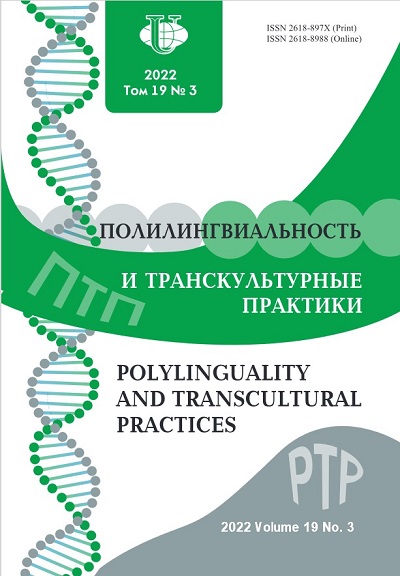Axiological Concepts “Life” and “Death” in the Chinese Language Picture of the World
- Authors: Lu S.1, Polyakova E.V.1
-
Affiliations:
- Peoples’ Friendship University of Russia
- Issue: Vol 19, No 3 (2022)
- Pages: 423-438
- Section: Language in System
- URL: https://journals.rudn.ru/polylinguality/article/view/32070
- DOI: https://doi.org/10.22363/2618-897X-2022-19-3-423-438
Cite item
Full Text
Abstract
The authors of the article consider the conceptual dyad “Life-Death” from the position of a representative of the Chinese linguistic culture, seeking to enter a new cultural space for themselves - the so-called “Russian world”. The hypothesis of the study is that the carrier of a foreign cultural linguistic consciousness has an already formed cognitive base, which becomes a contrasting background for the perception of a new linguistic reality. Within the framework of the article, the authors analyzed the cultural context, which makes it possible to explicate the semantics of these concepts in the Chinese language picture of the world, and also conducted an experiment with a reference group, which made it possible to objectify their actual meanings. The essence of the experiment was the work of a receptive group with precedent texts that contain in their semantic field the conceptual core “Life” / “Death” or “Life-Death”. Precedent texts are obligatory formants of the cognitive base of an ethnos. We sought to obtain the most recurrent responses to these stimuli in order to differentiate the conceptual features of the dyad. The result of the experiment was a selection of precedent texts, commented on by the receptive group. Summarizing the empirical data, we came to the conclusion that for the bearer of the Chinese linguistic consciousness, the concepts “Life” and “Death” represent an ontological unity with the corresponding set of characteristics: Tao, the great middle path, destiny, happiness. In addition, linguo-ethnic standards were identified: “noble husband” and “perfect sage”.
Keywords
About the authors
Siqi Lu
Peoples’ Friendship University of Russia
Email: lvsiqi@mail.ru
Post-graduate student of the Department of the Russian Language No. 2 Institute of the Russian Language Miklukho-Maklaya st., 6, Moscow, 117198, Russian Federation
Elena V. Polyakova
Peoples’ Friendship University of Russia
Author for correspondence.
Email: lelya2008-72@mail.ru
Candidate of Philological Sciences, Associate Professor of the Russian Language Department of the Russian Language No. 2 Institute of the Russian Language Miklukho-Maklaya st., 6, Moscow, 117198, Russian Federation
References
- Doicher, G. 2016. Skvoz’ zerkalo yazyka. Moscow: AST publ. Print. (In Russ.)
- Gachev, G.D. 1988. Natsional’nye obrazy mira. Moscow: Sovetskii pisatel’ publ. Print. (In Russ.)
- Karaulov, Yu.N. 2010. Russkii yazyk i yazykovaya lichnost’. Moscow. Print. (In Russ.)
- Kornilov, O.A. 2011. Yazykovye kartiny mira kak proizvodstvennye natsional’nykh mentalitetov. Moscow. Print. (In Russ.)
- Tan’, Aoshuan. 2004. Kitaiskaya kartina mira: Yazyk, kul’tura, mental’nost’. Moscow: Yazyki slavyanskoi kul’tury publ. Print. (In Russ.)
- Ivanchenko, N.V. 2014. “Osobennosti diskursa konfutsianstva”. Nauchnyi rezul’tat. Voprosy teoreticheskoi i prikladnoi lingvistiki 2: 23—28. Print. (In Russ.)
- Karasik, V.I. 2009. Yazykovye klyuchi. Moscow: Gnozis publ. Print. (In Russ.)















